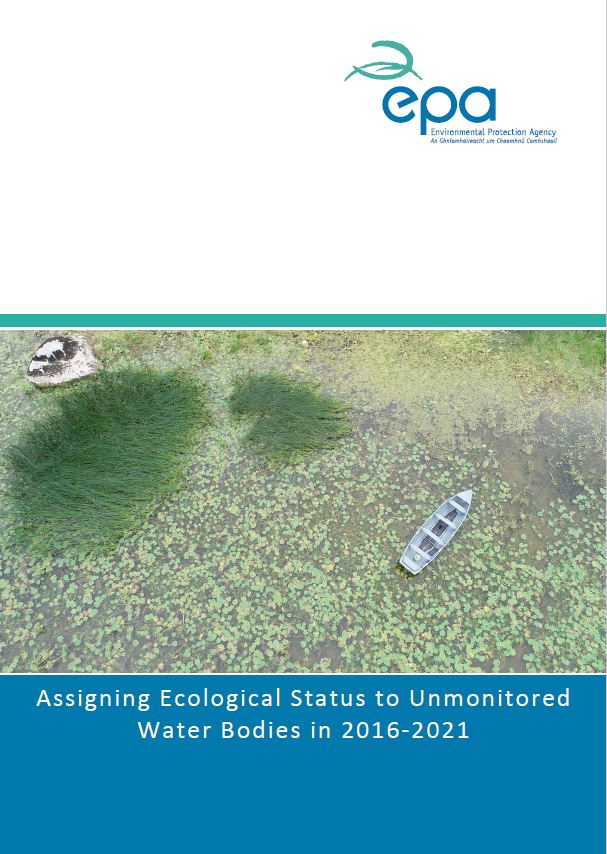A technical report outlining the methodologies used in surface waters and groundwaters
Summary: In Ireland, almost 60 per cent of identified Water Framework Directive (WFD) water bodies1 are monitored. The current ecological status assigned to these waterbodies is based on the results of the 2019-2021 national water quality monitoring programme (EPA, 2021). The status for those water bodies that are not monitored must be assigned by other means. The purpose of this technical paper is to outline how status is assigned to the remaining unmonitored surface waters and groundwaters.

Appendix A - Unmonitored river status methodology 2016-2021
Appendix B - Unmonitored lake status methodology 2016-2021
This report outlines the methods applied to assign status to unmonitored rivers, lakes, transitional and coastal and groundwater water bodies for the 2016-2021 period. Each water category will be dealt with under a separate heading.
The 2016-2021 ecological status assessment results for all water bodies based on all assessment techniques are available to download from the EPA website at https://gis.epa.ie/GetData/Download
The WFD sets out in detail how status should be assigned for each identified water body type by monitoring various biological and physicochemical elements. The elements to be monitored are prescribed in the Directive and monitoring results are compared against type-specific reference conditions to determine the status of water bodies. While the Directive requires that all water bodies are assigned a status it does not require that all water bodies are monitored.
It is widely recognised that monitoring all water bodies is not economically or logistically feasible and therefore it is necessary to group similar water bodies together for the purpose of assigning status. This is allowed for by the Directive as long as sufficient water bodies are monitored within a group to provide an accurate assessment of status of that group (Common Implementation Strategy Guidance Document No. 7). This grouping can be based on similar hydrological, geomorphological or geographical conditions or on similar land-uses or catchment impacts. Statistical analysis can also be used to group water bodies with similar characteristics. In all cases grouping must be technically or scientifically justifiable.
As indicated, approximately 60 per cent of the surface and groundwater bodies are currently monitored in the national water quality monitoring programme. This means that water status for those water bodies that are not monitored must be assigned by other means. This can either involve grouping of similar water bodies together for the purpose of assigning status or by the use of expert judgement where grouping is not possible.
The approach taken for assigning status to unmonitored water bodies for the 2013-2018 period was published and is available. The methodologies for assigning status to unmonitored rivers and lakes were subsequently updated to improve the overall confidence in the results.
https://www.epa.ie/media/epa-2020/monitoring-amp-assessment/freshwater-amp-marine/Cover-fromAssigning-Ecological-Status-to-Unmonitored-Water-Bodies-in-2016-2021.JPG